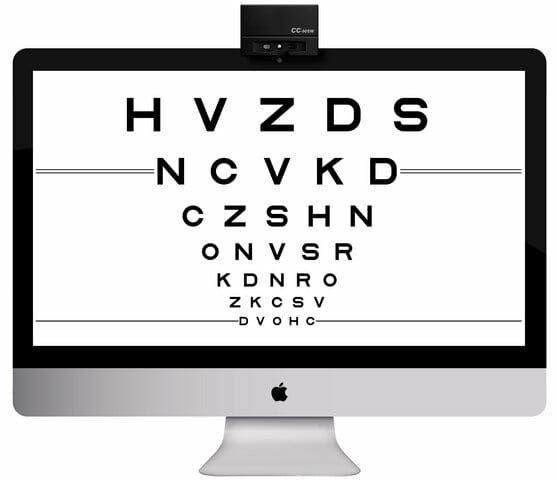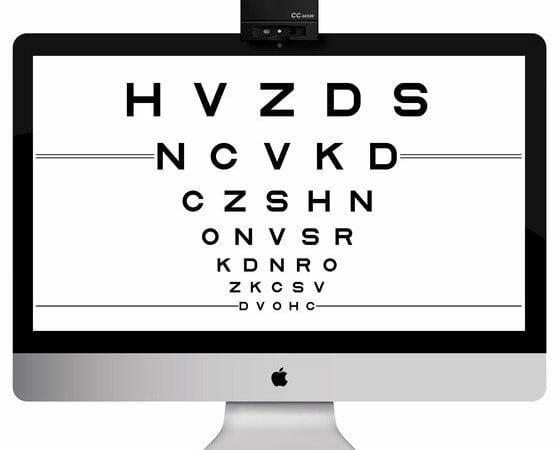Part Three: Types of Eye Examinations

In part three of this informative series on the various types of eye examinations, we look at three more tests that your eye doctor may choose to perform during a visit to the optometrist’s office. In part one, we discussed procedures such as applanation tonometry, corneal topography, and the slit-lamp exam, among others. In part two, we highlighted a few other eye exams, including non-contact tonometry, refraction testing, and fluorescein angiogram. Today, we look at a few other kinds of common eye exams.
Visual Acuity Testing
In a visual acuity test, the optometrist will gauge a patient’s ability to see sharp, clear images at distances ranging from close up, to far away. The familiar eye chart, pictured above, should conjure up past experiences of visual acuity tests for many patients. In children, a modified / simplified version of the test is performed, where the young person is asked to identify from among a battery of capital-letter “E’s,” which direction the letter is facing. They identify an answer by holding their fingers out, replicating the direction of the letter they are seeing.
Ultrasound Test
Ultrasound eye testing involves the use of sound waves, which create an image of a patient’s eye structure, on an internal basis. This kind of test is often used to determine the effects of cataracts on a patient’s retina, and to evaluate the severity of ocular tumors. When a patient is scheduled for surgery to remove cataracts, the ultrasound test will typically be administered before the operation, in order to evaluate the patient’s condition.
Visual Field Test
Visual field testing measures a patient’s ability to see to each side, in the periphery of the field of vision. An optometrist will typically ask the patient to focus on an object directly in front of them, in the very middle of their field of vision. This may be mediated through the use of a computer screen, or the doctor may situate themselves in front of the patient. While staring directly at the target in front of them, the patient will then indicate when an object can be seen, moving in the periphery of their vision.
[Photo Via: Top-Con Medical]

